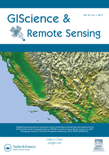
GIScience & Remote Sensing
Scope & Guideline
Unlocking the Future of Geographic Knowledge
Introduction
Aims and Scopes
- Remote Sensing Applications:
The journal emphasizes the use of remote sensing technologies to monitor and analyze environmental phenomena, land use changes, and ecological dynamics across various landscapes. - Geospatial Analysis:
A core focus is on the development and application of geospatial analytical techniques, including machine learning and big data analytics, to derive insights from complex datasets. - Environmental Monitoring and Management:
Research often centers on monitoring environmental changes, such as climate impacts, land degradation, and resource management, using satellite and aerial imagery. - Interdisciplinary Approaches:
The journal promotes interdisciplinary research that combines insights from ecology, geography, urban planning, and environmental science to address pressing global challenges. - Innovative Methodologies:
A significant contribution of the journal includes the development of new methodologies for data acquisition, processing, and analysis, particularly leveraging advancements in artificial intelligence and machine learning.
Trending and Emerging
- Deep Learning and AI Applications:
There is a significant uptick in the application of deep learning and artificial intelligence techniques for remote sensing data analysis, enhancing accuracy in tasks such as land cover classification, environmental monitoring, and change detection. - High-Resolution Remote Sensing:
The trend towards utilizing high-resolution satellite and aerial imagery is on the rise, allowing for more detailed and precise analyses of land use and environmental changes. - Temporal Dynamics and Time-Series Analysis:
Research increasingly focuses on temporal dynamics, with studies utilizing time-series data to analyze trends and changes in ecosystems, urban growth, and climate impacts over time. - Integration of Multi-Source Data:
There is a growing trend towards integrating multi-source data (e.g., combining satellite, UAV, and ground-based data) to provide more comprehensive analyses and insights. - Urban Studies and Smart City Applications:
Emerging themes also include urban studies, particularly regarding smart city applications, urban heat islands, and spatial planning, reflecting the need for sustainable urban development solutions.
Declining or Waning
- Traditional Remote Sensing Techniques:
There appears to be a decline in the emphasis on traditional remote sensing methods, such as basic spectral analysis and simple image classification, as more advanced techniques like deep learning gain traction. - Static Land Use Mapping:
Research focusing solely on static land use mapping without considering dynamic changes or temporal aspects is becoming less frequent, with a shift towards more dynamic, time-series analyses. - Basic Data Collection Methods:
Papers relying on basic data collection methods without integration of advanced technologies (like UAVs or high-resolution satellite data) are less common, indicating a move towards more sophisticated methodologies. - Generalized Climate Change Studies:
While climate change remains a critical area of study, generalized studies without specific, actionable insights or innovative methodologies are being phased out in favor of more targeted and technologically advanced research. - Local Case Studies Without Broader Implications:
There is a noticeable reduction in the number of local case studies that do not tie into broader global or regional implications, as researchers increasingly seek to address issues with wider relevance.
Similar Journals
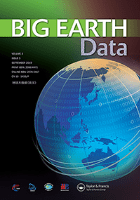
Big Earth Data
Empowering Research with Transformative Earth Data SolutionsBig Earth Data is a prestigious open-access journal that has been at the forefront of advancing research in the intersection of earth science and computer technology since its inception in 2017. Published by TAYLOR & FRANCIS LTD in the United Kingdom, this journal is dedicated to disseminating groundbreaking findings and innovative methodologies in the fields of Earth and Planetary Sciences and Computer Science Applications. With a commendable impact factor and an impressive positioning in the Scopus rankings—claiming Q1 status in Computers in Earth Sciences and Q2 in Computer Science Applications—it serves as a vital resource for researchers, professionals, and students alike. The journal encourages submissions that explore the integration of big data technologies in managing, analyzing, and visualizing earth-related data, thereby fostering interdisciplinary collaboration. Since embracing its open-access model, Big Earth Data has enhanced the accessibility of high-quality research, promoting a broader dialogue in the scientific community and contributing to informed decision-making in global environmental challenges.
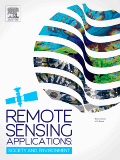
Remote Sensing Applications-Society and Environment
Advancing knowledge at the intersection of society and environment.Remote Sensing Applications-Society and Environment, published by Elsevier, stands at the forefront of interdisciplinary research, bridging the fields of remote sensing and environmental science. With an impressive impact factor and recognition within the Q1 quartile in both Computers in Earth Sciences and Geography, Planning and Development, the journal is a vital resource for researchers, professionals, and students committed to advancing our understanding of environmental dynamics through innovative remote sensing technologies. Since its inception in 2015, this journal has cultivated a rich repository of knowledge, addressing pertinent societal and environmental issues, making it a leading source for transformative applications in the field. Accessible and relevant, articles published here not only explore theoretical advancements but also practical implications, ensuring research findings are effectively disseminated to stimulate further inquiries and applications in sustainability and ecological stewardship. The journal's strong Scopus rankings, particularly within its categories, solidify its role as an essential platform for scholarly exchange.

Journal of Applied Remote Sensing
Pioneering Research at the Intersection of Technology and Earth SciencesJournal of Applied Remote Sensing, published by SPIE-SOC PHOTO-OPTICAL INSTRUMENTATION ENGINEERS, stands at the forefront of research in the interdisciplinary field of applied remote sensing, focusing on innovative applications and advancements in technology that support our understanding of the Earth's systems. Established in 2007, this journal has quickly gained recognition, currently holding a Q2 ranking in the Earth and Planetary Sciences category, reflecting its influence and quality within the academic community, with a Scopus ranking of #68 out of 195 in General Earth and Planetary Sciences. The journal provides a robust platform for researchers, professionals, and students to disseminate their findings, ensuring open avenues for knowledge exchange in a field that increasingly impacts environmental monitoring, disaster management, and resource management. With its E-ISSN 1931-3195, the Journal of Applied Remote Sensing remains committed to advancing scholarly communication, fostering innovations that respond to real-world challenges, and enhancing remote sensing applications across diverse sectors. The journal operates from its headquarters in Bellingham, WA, USA, and aims to portray cutting-edge research that enriches the academic literature and informs policy and practice.
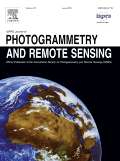
ISPRS JOURNAL OF PHOTOGRAMMETRY AND REMOTE SENSING
Shaping the Future of Photogrammetry and Remote SensingISPRS Journal of Photogrammetry and Remote Sensing is a prestigious publication at the forefront of the fields of photogrammetry and remote sensing. Established in 1989 and published by Elsevier, this journal has consistently maintained a strong academic standing, currently holding a top-tier Q1 ranking across multiple categories, including Atomic and Molecular Physics, Computer Science Applications, and Engineering. This reflects its vital contribution to advancing knowledge and technology in these dynamic fields. The journal is not only a vital resource for researchers and professionals but also serves as an essential academic platform for students keen on delving into the latest developments in geospatial sciences. The journal operates under a non-open access model, ensuring that submitted research adheres to the highest standards of scholarly communication and integrity. With an impactful focus, it brings innovative research, comprehensive reviews, and significant case studies to a global audience. The ISPRS Journal is crucial for those aiming to enhance their understanding and application of remote sensing techniques within various scientific disciplines.
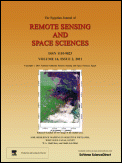
Egyptian Journal of Remote Sensing and Space Sciences
Fostering Global Collaboration in Earth and Space StudiesThe Egyptian Journal of Remote Sensing and Space Sciences, published by Elsevier, is a premier open-access journal dedicated to advancing the fields of Remote Sensing and Space Sciences. Since its inception, the journal has gained a prominent reputation, currently holding a prestigious Q1 ranking in Earth and Planetary Sciences and placing within the top 10% of its field according to Scopus metrics. With an ISSN of 1110-9823 and an E-ISSN of 2090-2476, the journal features a diverse range of scholarly articles that explore both theoretical and practical aspects of remote sensing technologies and space science innovations, thus appealing to researchers, professionals, and students alike. Established in 2003 and fully transitioning to an open-access model in 2010, the journal aims to disseminate knowledge and foster collaboration across the globe by providing wider accessibility to groundbreaking research findings. Its commitment to quality and innovation is a catalyst for intellectual development in these dynamic and evolving disciplines.

Earth Science Informatics
Connecting Researchers to Propel Earth Science Innovations.Earth Science Informatics, published by SPRINGER HEIDELBERG, serves as a premier platform for disseminating innovative research in the realm of Earth and Planetary Sciences. With an ISSN of 1865-0473 and an E-ISSN of 1865-0481, this journal offers insightful contributions that leverage informatics and data-driven approaches to address complex geoscientific challenges. As a testament to its impact in the field, it ranks in the Q2 quartile and holds an impressive 73rd percentile rank among 195 journals in the broader **Earth and Planetary Sciences** category, as per Scopus rankings. This journal invites researchers, professionals, and students to explore and contribute to the growing body of knowledge that bridges the gap between informatics and Earth science, fostering advancements in both theoretical frameworks and practical applications. Situated in Germany, at TIERGARTENSTRASSE 17, D-69121 HEIDELBERG, it aims to enhance interdisciplinary collaboration and propel scientific discovery from 2009 to 2024 and beyond, reinforcing its vital role in the academic community.
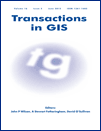
Transactions in GIS
Advancing Geographic Insights for a Better TomorrowTransactions in GIS is a premier academic journal published by WILEY, dedicated to advancing the field of Geographic Information Science (GIS). With an ISSN of 1361-1682 and an E-ISSN of 1467-9671, this journal has continually contributed valuable insights since its inception in 1996, transforming the landscape of GIS research and application. Covering a broad scope within Earth and Planetary Sciences, it holds a notable Q2 ranking and stands in the 74th percentile among its peers as per Scopus rankings. The journal serves as a critical platform for researchers, professionals, and students who seek to disseminate and engage with innovative GIS methodologies, applications, and theoretical advancements. With a commitment to quality and rigor, Transactions in GIS remains a vital resource for those at the forefront of geographic research and analysis.

Revue Internationale de Geomatique
Elevating Standards in Geomatics MethodologiesRevue Internationale de Geomatique (ISSN: 1260-5875, E-ISSN: 2116-7060) is a prestigious journal published by TECH SCIENCE PRESS, dedicated to advancing the field of geomatics. This journal serves as a vital platform for disseminating significant research findings, cutting-edge methodologies, and innovative applications within the realm of spatial data and technology. With an emphasis on interdisciplinary studies, it fosters collaboration among researchers, professionals, and students across various domains, including environmental science, urban planning, and geographic information systems (GIS). Although not an open-access journal, Revue Internationale de Geomatique maintains a rigorous peer-review process ensuring the publication of high-quality articles that contribute to the evolving landscape of geomatics. Given its relevance and commitment to scholarly excellence, this journal is a crucial resource for advancing knowledge and practices in the ever-growing field of spatial information science.
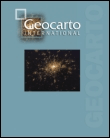
Geocarto International
Exploring the Frontiers of Geography and Environmental ScienceGeocarto International is a premier peer-reviewed journal published by Taylor & Francis Ltd that focuses on the intersection of geography, planning, and environmental science, offering valuable insights into emerging research trends and methodologies within these fields. With an impressive impact factor, the journal is consistently recognized for its contributions, ranked in the Q1 category for Geography, Planning, and Development as well as Q2 in Water Science and Technology as of 2023. Geocarto International not only showcases high-quality research articles but also embraces Open Access publishing since 2023, promoting accessibility and fostering a global dialogue among researchers, professionals, and students. Spanning over three decades from its inception in 1986 to 2024, the journal continues to serve as an essential platform for disseminating knowledge, advancing scholarly communication, and addressing crucial environmental challenges across the United Kingdom and beyond. Explore the latest advancements and contribute to the dynamic discussions shaping the future of geography and environmental sciences through Geocarto International.

International Journal of Digital Earth
Empowering research with open access to geoscience.Welcome to the International Journal of Digital Earth, a premier open-access journal published by Taylor & Francis Ltd, dedicated to advancing the field of digital geoscience. With its ISSN 1753-8947 and E-ISSN 1753-8955, this journal has established itself as a vital resource for scholars and practitioners alike since its inception in 2008. The journal is at the forefront of interdisciplinary research, showcasing a diverse scope from Earth sciences to computer science applications, evidenced by its impressive ranking in the 2023 Scopus database. It holds a Q1 categorization in Earth and Planetary Sciences, with a percentile rank among the top 16% of its peers, and also stands out in the Q2 quartile for both Computer Science Applications and Software disciplines. The journal's commitment to open access, established in 2022, underscores its dedication to disseminating knowledge and fostering collaboration. By providing a platform for high-quality research, the International Journal of Digital Earth plays a critical role in addressing the complexities of our changing planet through innovative digital solutions. Whether you are an experienced researcher or a student, this journal is an essential addition to your academic toolkit.